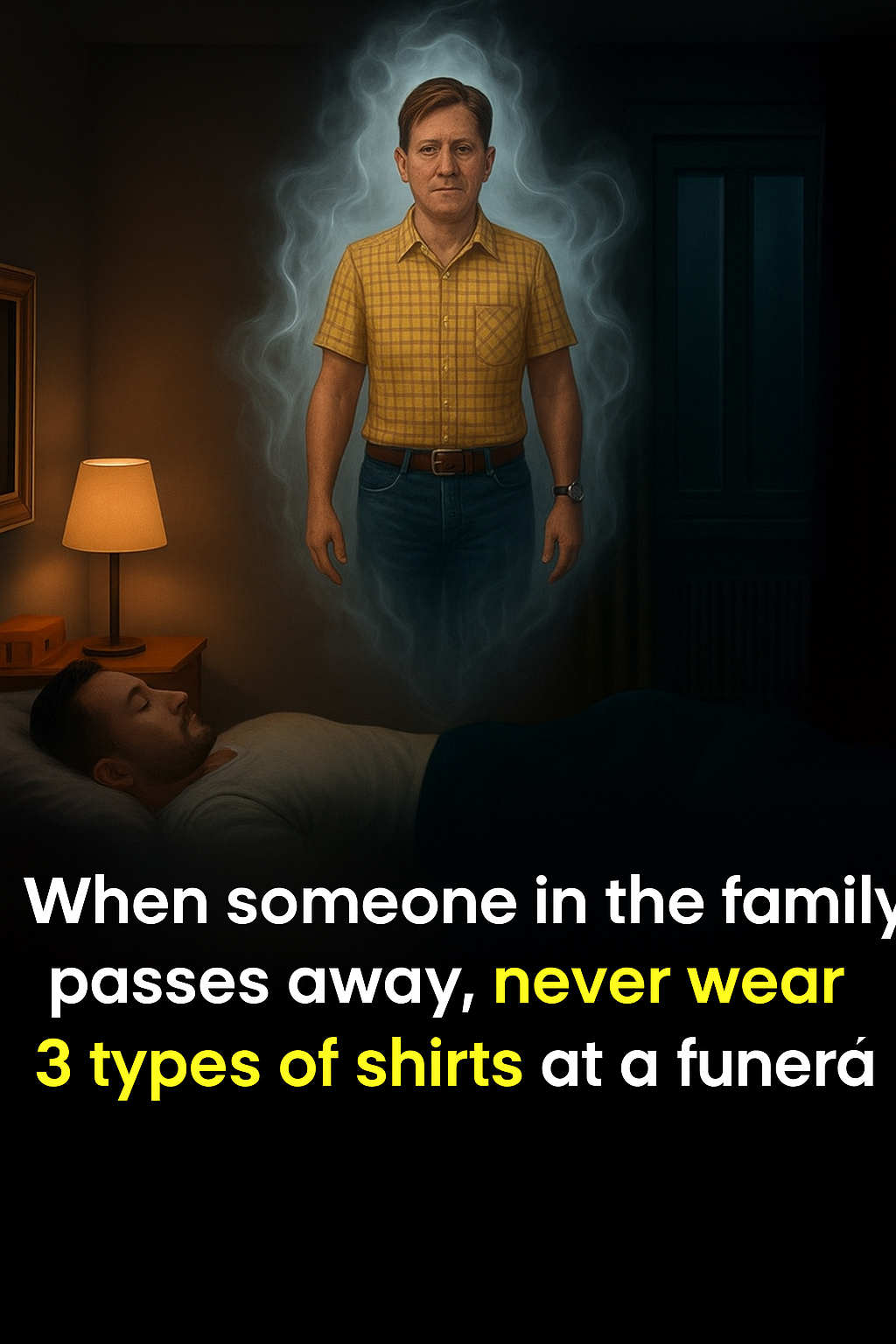I remember the day perfectly. The air was heavy, not just with the weight of grief, but with a palpable silence that seemed to swallow every sound. It was my Uncle Thomas’s funeral. He was a good man, quiet but kind, and his passing had left a hole in our family that we knew would never fully close.
I had traveled a few hundred miles to get there and, in my rush to get ready, I didn’t think twice about what I was wearing. The funeral notice had simply said, “formal attire,” which, in my mind, meant a nice pair of slacks and a button-down shirt. The shirt I chose was brand new. It was a crisp, bright, vibrant red. In my everyday life, it was a shirt that said, “I’m ready for the day.” I thought it was a statement of confidence.
As I walked through the doors of the funeral home, the hushed room seemed to freeze. Heads turned. Conversations stopped. People who had been speaking in whispers suddenly fell completely silent. My grandmother, usually so warm and welcoming, simply looked at me, her eyes filled not with anger, but with a deep, resigned sadness. I tried to offer a small, reassuring smile, but no one returned it. The silence followed me as I found a seat, the bright color of my shirt feeling like a spotlight in a room full of shadows. I felt a wave of confusion and humiliation wash over me. What had I done wrong? Was my uncle’s passing more complicated than I knew?

It wasn’t until later, during the reception, that my cousin pulled me aside. He was kind, but his voice was low, laced with a pity I didn’t yet understand.
“I know you meant well,” he said gently, “but you can’t wear a red shirt to a funeral.”
I was completely dumbfounded. “Why?” I asked, my voice barely a whisper. “What’s wrong with red?”
And that’s when he explained. I was completely unaware of it, but in many cultures, wearing a bright color like red is a sign of celebration. It can be a color of joy, of life, of passion. But at a funeral, it’s a distraction. My shirt wasn’t a statement of confidence; it was a loud, jarring noise in a room that needed silence. I had, in a single, thoughtless choice, made myself the center of attention on a day that was supposed to be about my uncle. I had made his funeral about me.
The shame was a physical blow. The horror of that moment was not about social etiquette; it was about a lack of empathy. I had been so focused on my own appearance that I completely failed to consider the feelings of a family in mourning. I had missed the most important rule of a funeral: your presence should be supportive, not distracting. My shirt was a scream in a room that needed a whisper.
My cousin’s words made me realize there were other unspoken rules I had likely broken in the past or was at risk of breaking in the future. It’s not just about colors. It’s about the very message our clothes send without us even realizing it. The bright, flashy, and attention-grabbing shirt is a definite no-no, but there are two others that people often get wrong.

The second type of shirt to avoid is anything too casual—the t-shirt or the tank top. A t-shirt with a brand logo, a graphic design, or a witty slogan is perfectly fine for daily life. We wear them to the gym, to the grocery store, and to hang out with friends. But a funeral is not an everyday event. It is a moment of profound sadness and respect. A casual t-shirt, even if it’s black, can send the wrong message. It can feel too relaxed, as if you don’t take the gravity of the occasion seriously. And while some families might suggest a more “casual” dress code, this is not an invitation to wear your favorite band shirt. A simple collared shirt, blouse, or button-down is always a safer, more respectful choice. It shows that you’ve made an effort to honor the occasion, to say, “I understand how important this moment is, and I have dressed to show my respect.”
The third type of shirt to never wear to a funeral is one with bold prints or flashy patterns. This goes hand-in-hand with the first point about bright colors, but it’s more specific. Hawaiian shirts, animal prints, or shirts with wild geometric designs, no matter how stylish they may be in another setting, are completely out of place at a funeral. They are meant to draw the eye, to create a sense of fun and vibrancy, but a funeral is about quiet reflection. A shirt with a loud pattern can be a visual distraction, jarring the senses in a space that needs calm and peace. The day is about honoring the person who has passed, not about drawing attention to yourself. When in doubt, simplicity is always the best choice.

The lesson from that day has stayed with me. My red shirt wasn’t just a social faux pas; it was a symbol of my own thoughtlessness. The shame was a haunting reminder that in life, and especially in death, it’s not about what we intend, but what our actions and our appearance communicate to others. The true horror wasn’t the social blunder, but the unintentional hurt I caused my grieving family.
Even now, sometimes I wonder if my grandmother ever forgot that bright flash of red in a sea of black. I hope that in the end, my presence was a quiet comfort, but I know that my shirt was a loud mistake. My Uncle Thomas’s funeral taught me that respect isn’t just in the words we say or the actions we take; it is also in the silent message we send with our clothes. A funeral is about supporting the living and honoring the dead. It is a time for presence, not for presentation. And my red shirt was a haunting reminder that I completely failed to understand that until it was too late.
Beta feature


